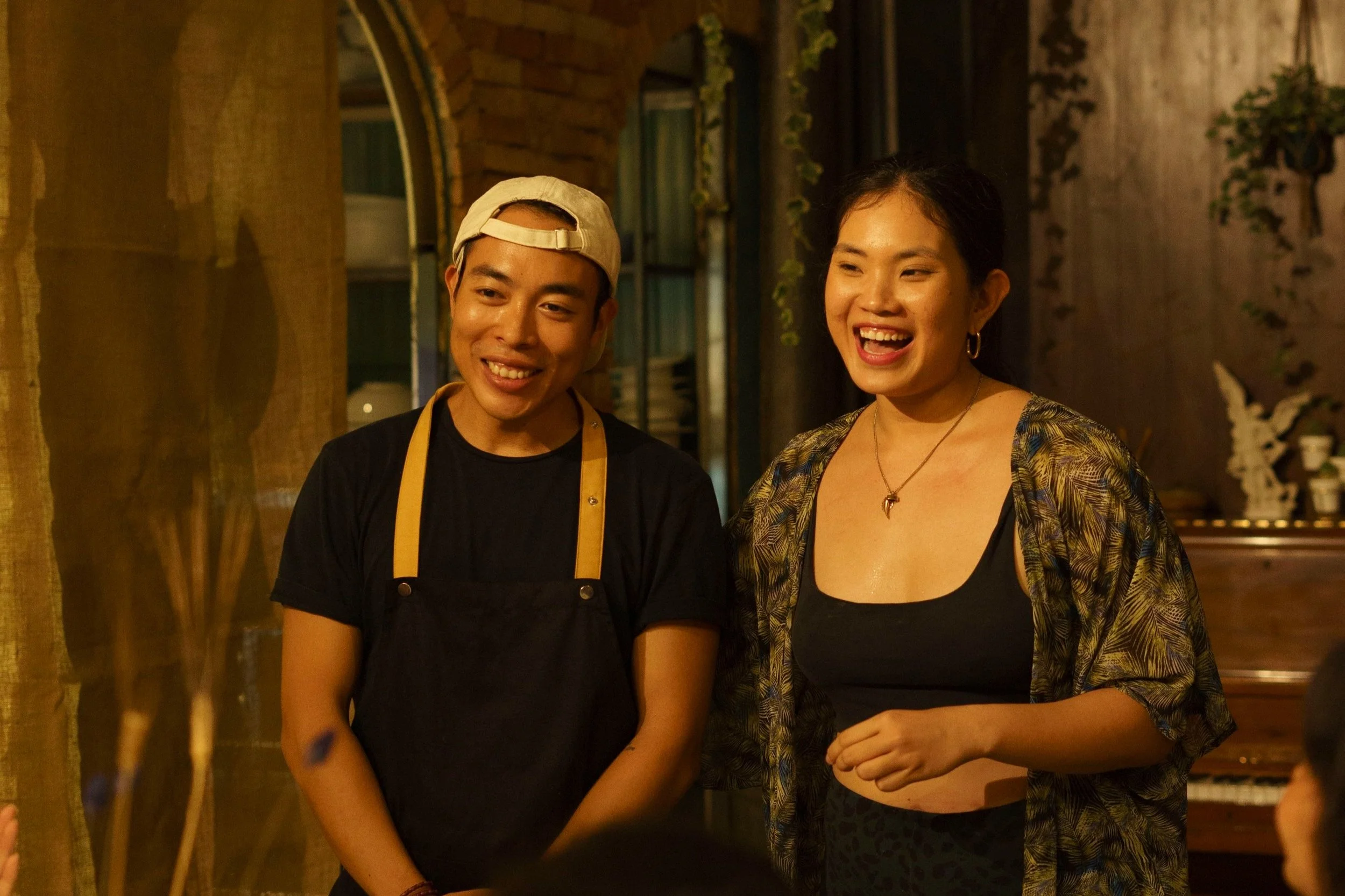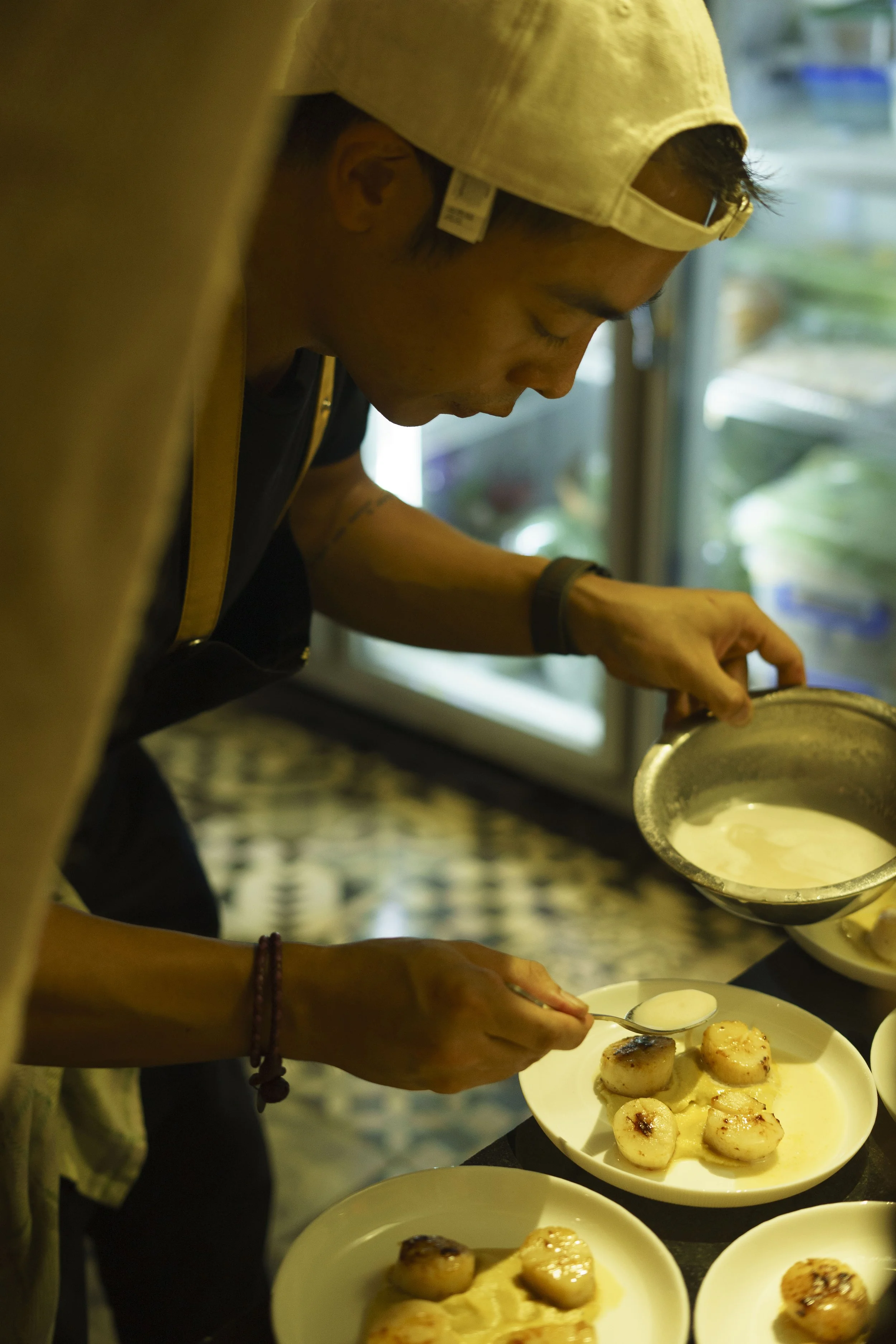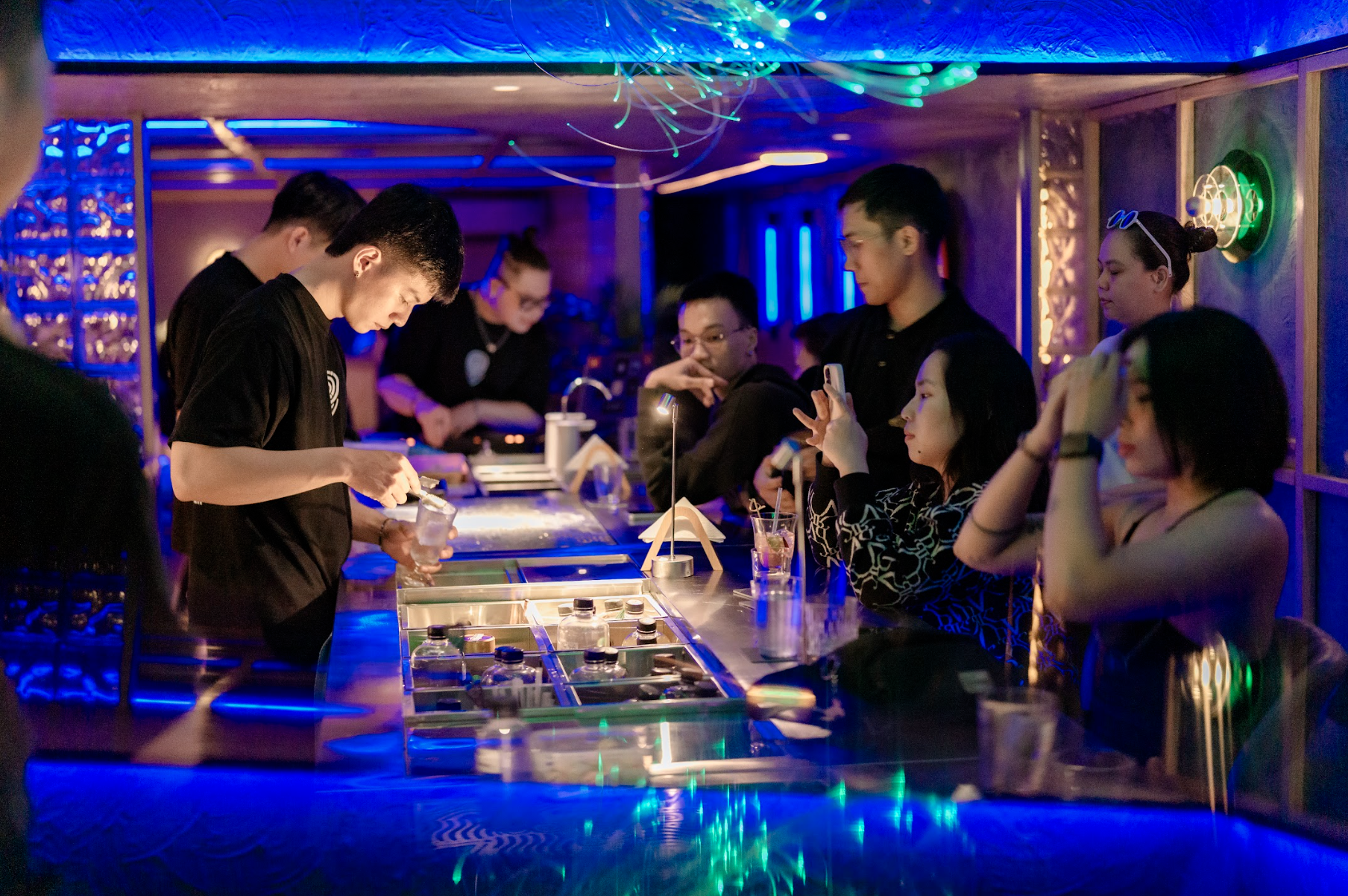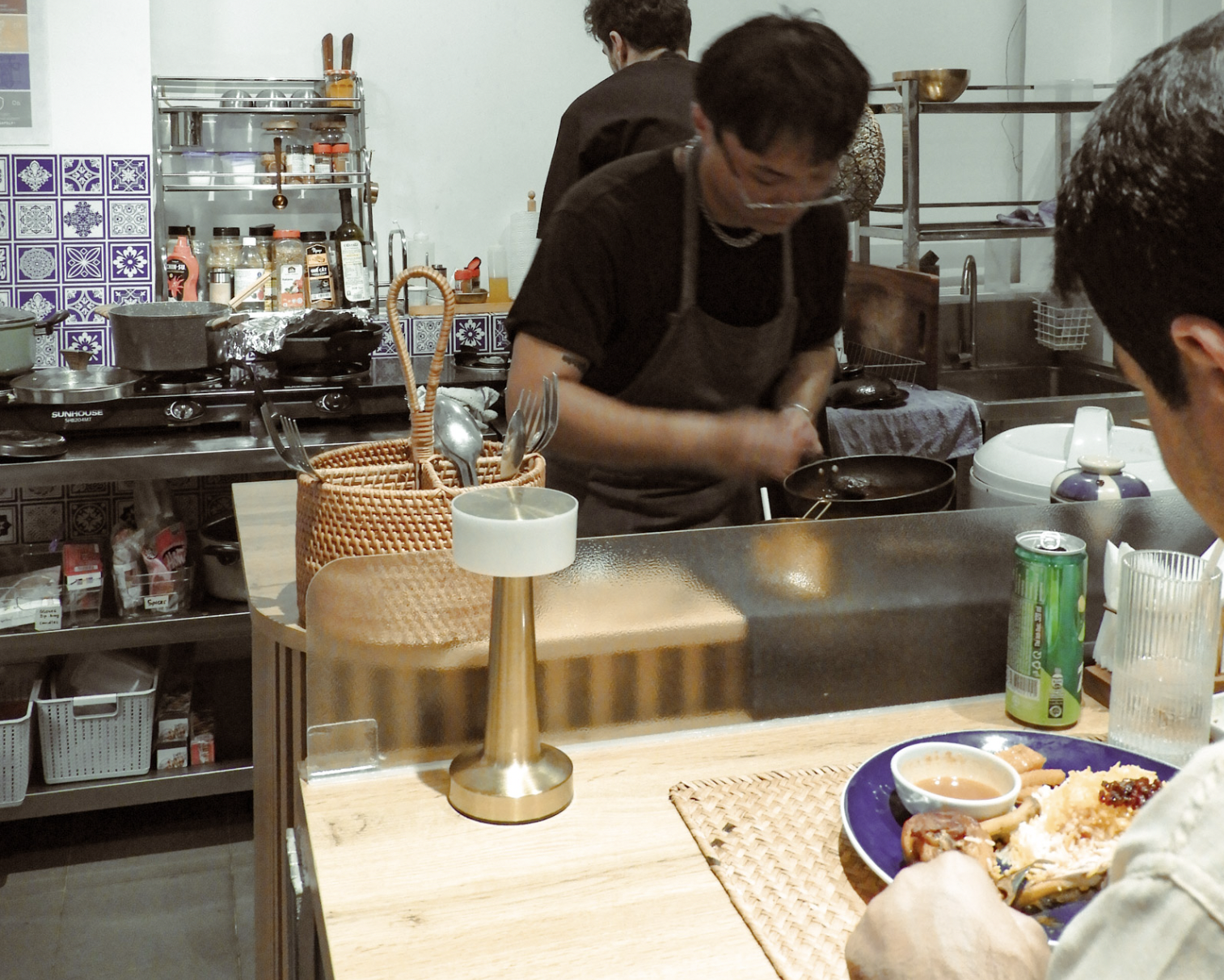Why this Le Cordon Bleu-trained Chef returned to Vietnam to make Vietnamese food
Amidst the rich flavours and traditions of Vietnam's culinary landscape, Chef Thach's journey emerges as a beacon of innovation and fusion. From the distinguished halls of Le Cordon Bleu in London to the vibrant streets of his Vietnamese homeland, Thach's culinary odyssey reflects a masterful blend of Western techniques and traditional Vietnamese flavours.
In this interview, we explore how Chef Thach Ta (ex-Le Cordon Bleu with a MICHELIN star-studded background) weaves his formal culinary education with the rich threads of his cultural lineage and why he chose to return to Vietnam to make Vietnamese cuisine, but not in the way you know it.
Chef Thach Ta and Jovel at #SaigonSupperClub
Journey and Inspiration
1. Can you tell us about your journey from studying at Le Cordon Bleu Culinary Institution in London to developing your own unique style of modern Vietnamese cuisine?
After graduating from LCB, I was fortunate to work across various kitchens in London where I was able to train and further develop my skills in implementing Western techniques and developing flavours. My time living in the UK also helped me to explore different cuisines where I was able to interpret food from multicultural perspectives, thus allowing me to incorporate my Vietnamese heritage to my cooking styles.
2. What inspired you to blend traditional Vietnamese ingredients with European culinary techniques?
Having been born and raised in Vietnam, I have always wanted to highlight my heritage in an international context. Vietnamese ingredients are already beautiful, and I just want to bring them out further to the world with the techniques that I was trained to use.
3. How has your culinary training at Le Cordon Bleu and culinary experience in London shaped your approach to Vietnamese cuisine?
With London being such a diverse city, I had the chance to be exposed to various cultures; and seen multiple combinations of international cuisines being fused together. This became my main source of inspiration.
4. Why did you decide to return to Vietnam?
The first thing is family. I have been away for a number of years so I want to stay close to them again. And of course, the second is to immerse in the bustling F&B scene here in Vietnam.
5. Summarize Vietnam’s dining / culinary scene in three words
Bursting, young, and growing.
6. What has changed in Vietnam’s culinary scene since you left?
The influx of young foreign-born Vietnamese chefs coming back here with their ideas and different approach to food. The fast-growing nature of the young Vietnamese generations here in Vietnam shapes the demand for food experiences and the improving quality of life leading to the need for better services and quality in the way we serve food.
Culinary Approach and Innovation
1. How do you approach creating fusion dishes that balance the authenticity of traditional Vietnamese flavors with novel culinary ideas?
By talking to people around me - chefs, foodies, the Vietnamese aunties, the home cook, cookbooks, and through social media like TikTok (ha!); and of course through my experiences eating out.
2. Can you share some insights into how you conceptualize and develop a new dish?
I always start from the core; my heritage is Vietnamese who was born and raised here. I have a library of all the dishes that I love eating and think about how I can make them better, where I can play around with ingredients, or what other techniques I can use to bring out the flavor better. Many of those also came from trial and testing, where (mostly) errors turned into a great idea.
3. How do your desserts reflect your vision of modern Vietnamese cuisine? What makes them unique?
Having a sweet tooth, I’ve always wanted to impress my guests on not only the savory part but also the desserts because I do think Vietnamese cuisine has the greatest combination of flavors, texture, and complexity. My latest development is a pickled lemon and salted lime tart which is an inspiration from my childhood drinks - Chanh muối. It is a take from the traditional lemon tart but with a minor twist by using the salted lime, the saltiness is the perfect balance
e to cut through the richness of the cream and the sourness of the lemon.
4. Are there any exciting new culinary experiments or techniques that you're currently working on?
This may sound cliche but I have been focusing on fermentation and pickling techniques. Currently, I am working on creating new flavors from these techniques to see how we can develop new dishes. Hopefully, something great will come out eventually.
5. In what ways does your modern interpretation of Vietnamese cuisine adhere to and/or break away from traditional Vietnamese cooking techniques and presentations?
I try to stay close to the traditions and not break away from the cuisine itself, as Vietnamese food is already beautiful. I want to continue and maintain the flavor combination classically.
Challenges, Sustainability, and The Diner's Experience
1.What are some of the challenges you encounter when introducing Vietnamese ingredients and flavors to a wider audience, and how do you address them?
The key thing for me is how to retain the flavors and highlight them during the cooking process; and how to bring the whole dish together that makes it a sensible plate of food for the audience; as they have been well-perceived and known by the Vietnamese audiences in the traditional way of cooking or eating. It is a good thing that the customers in Vietnam are becoming more open-minded and willing to try new food which greatly helps the chefs generally to be more creative.
2. What are some challenges you have faced opening your own restaurant in the city?
I am currently not opening my own restaurant for now. However, I can see the level of competition is getting tougher and tougher every day. There is certainly also an issue of staffing around the industry; of how we can retain talents, give them the best opportunity and training; as well as maintain a good work-life balance.
3. Can you share an experience of a dish or a technique that was particularly challenging to master, and what you learned from that experience?
My “canh chua consomme” has taken me a while to master it. I was classically trained how to make consomme using egg whites, but this comes at a price where the yield is not the best - took me a while to get here but this dish did teach me a lot about wastage and yield that is crucial for any chef wishing to run their kitchen profitably.
4. How do you source your ingredients, especially those native to Vietnam? How important are sustainability and quality in your selection process?
Ingredients are inevitably the utmost important factor at any food establishment. I am thankful that Vietnam, with its biodiversity, is the best place for any chef to make use of. However, they are often underrated or unheard of. Therefore, I try to travel around as much as I can; learn from the local farmers, and understand how they are being used. That is how I learn about the beautiful products of Vietnam.
I truly believe that chefs do play a critical part in promoting sustainability. During my time at Fallow, which is a sustainable restaurant, I have learned tremendously from the chefs and their methodology is how to maximize not only the use of an ingredient but other sustainable ways of running the business.
5. What do you hope diners take away from the experience of tasting your modern Vietnamese cuisine? How do you aim to represent Vietnamese culture and ingredients through your cooking?
I only hope that when people taste my food, it brings them joy. Food is not only a means of survival but it is becoming an experience and thus, I would love my guests to have fun, enjoy the experience that I bring to them and leave with a happy smile - just like the personality of a true Vietnamese: friendly, happy and welcoming.
















Like what you read?
Discover Vietnam’s coming-of-age food and drink scene with one of our tours and experiences exclusively available at Saigon Social